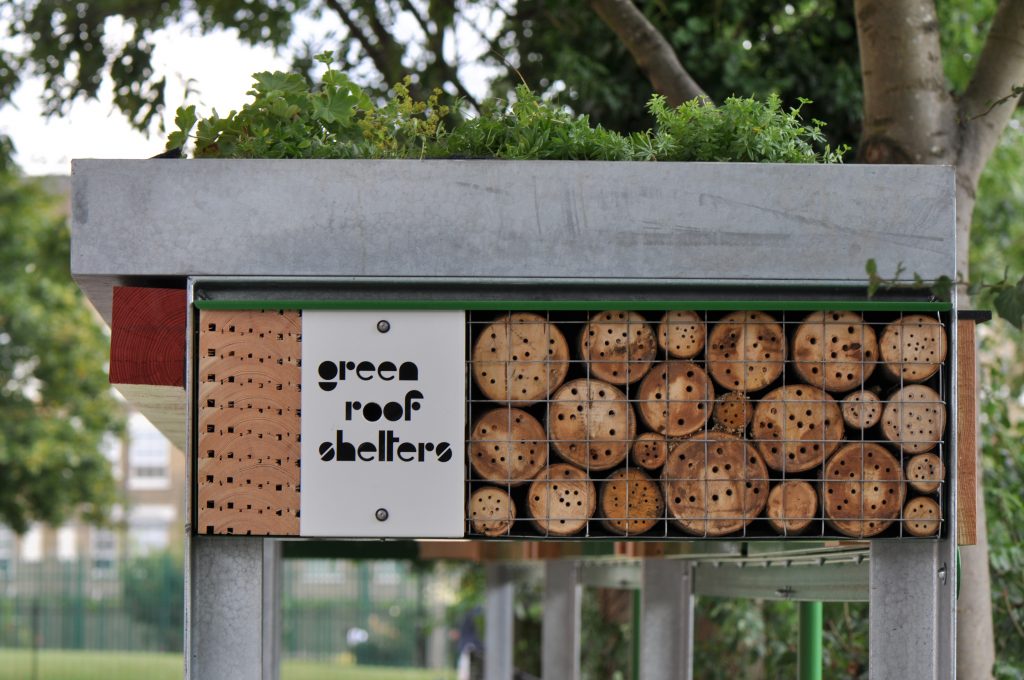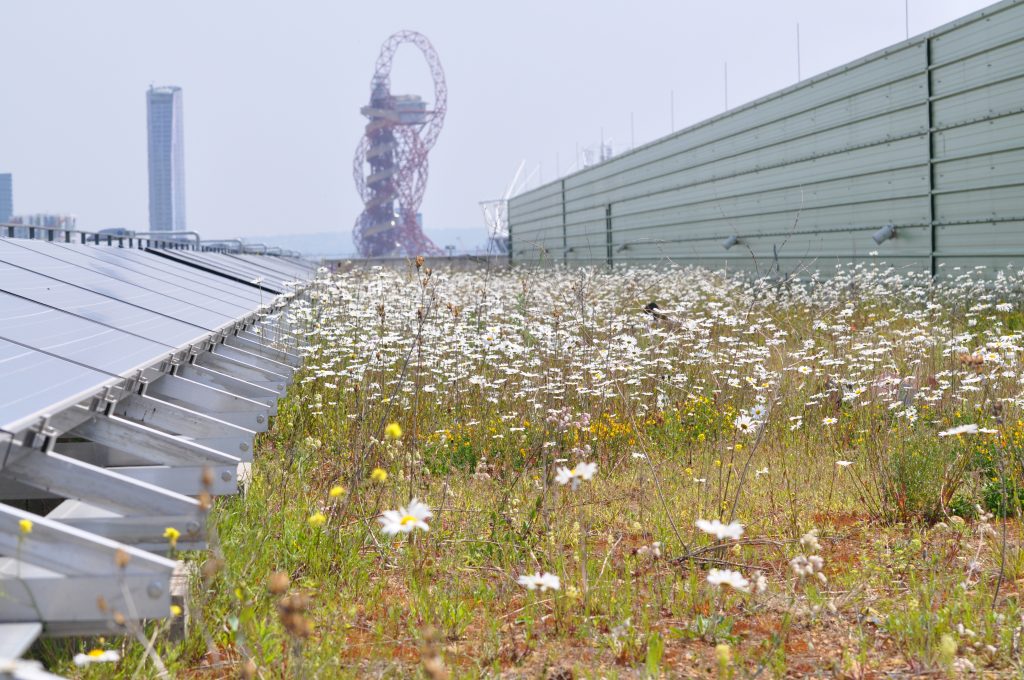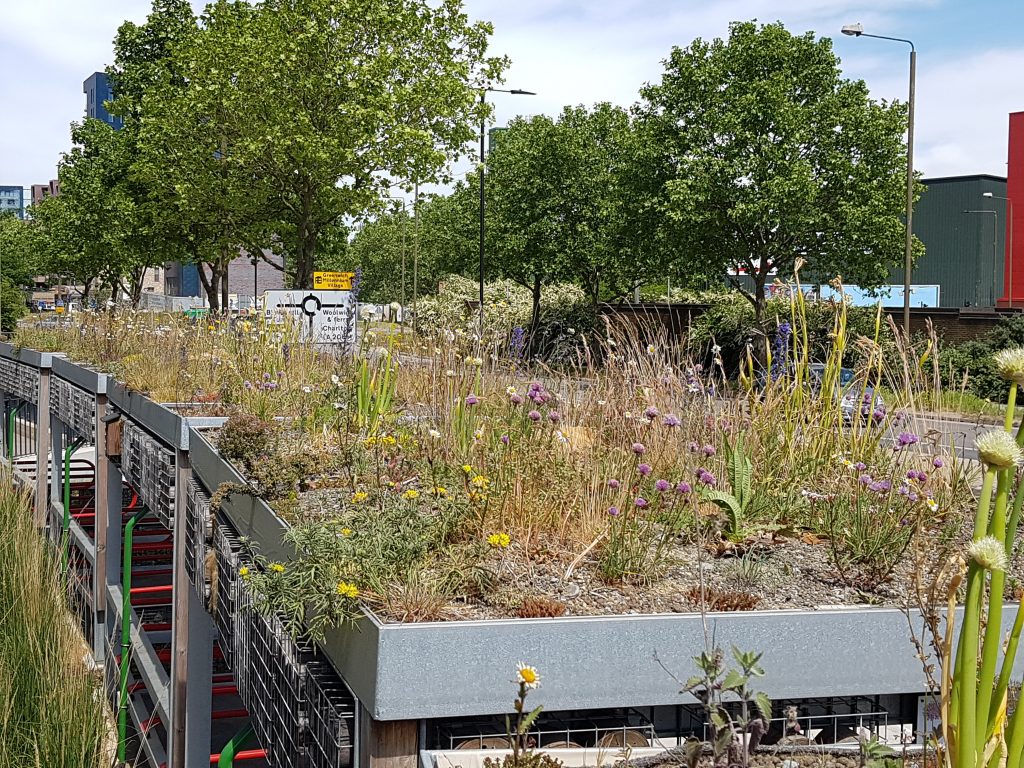How the Sustainability Research Institute combines innovation, opportunity, system refinement and education.
Sherry Dobbin caught up with Professor Darryl Newport, Director of the Sustainability Research Institute (SRI), which is University of East London’s centre of excellence for environmental research and development founded in 2001. They “collaborate with industry, government, public agencies and charities to enable changes in physical infrastructure and social capital that benefits the environment, promotes sustainable living and creates a carbon neutral society.”

SRD: Who comes to you for solutions?
DN: Large and Small industry partners, local and national government, NGO and third sector including wildlife trusts, architects and landscape architects, engineers, developers, and electronics industry… We can deliver anything from biodiversity monitoring to delivering system changes within manufacturing. We have the expertise to handle many types and scale of opportunities in research and development. We can help them change how they do their business, making them become more efficient, sustainable and helping them save energy, time and cost.
SRD: What motivates them to seek you out?
DN: Need for expertise around our specific research areas including the use of our state-of-the-art test facilities. Organisations can come for a series of interests and opportunities and can be first motivated by operational knowledge, cost savings, solutions–from innovative processes or materials to upgrading educational opportunity and market leader. We work with many SME’s to enable them to bid into some of the larger predominantly central government led contracts by upscaling their environmental and sustainability knowledge. We can provide varying levels of investment through different contracting methods and associated prefunded projects. We always consider nature and taking what nature provides as a solution to our ideas.

SRD: How do you explain your role as an institute vs a product development lab?
DN: We offer different types and levels of knowledge transfer. We are first and foremost a research and development space, we can design, develop, monitor and analyse for internal and external product and process. We offer CSR education and a soft landings approach to technological investment. The Design & the Technical aspect of a product and or process is only part of the investment. A large percentage of the effective use of a novel process or product is understanding its capabilities. We are geared to helped people understand our innovation through principles of behaviour change.
SRD: What are the largest imperatives for the built environment and developers?
DN: Sustainability needs to be nucleus for future design and business. Community development should be considered throughout projects, bringing people together and facilitating the design with a collective aim of benefiting the whole community. Modern methods of construction should be considered for all domestic housing, conservation of green infrastructure systems and ecosystems understanding how they can provide for our communities, identify efficiencies in resources management and design out carbon. Design for health & wellbeing and look at ways to encourage people to off the roads.
SRD: Tell us about some of the new concepts?
DN: Working within Knowledge Dock Enterprise, our business facing facility at UEL, we are developing a research and business ‘makerspace’ like a Makerversity facility for business, community groups and staff/students. We are finding that more SME’s and Industry are looking for physical making space or laboratory type space than office space. We are currently making changes that will regenerate this space for green enterprise. We have a lot of operational technology that external business and communities can utilise. We have an array of high-end microscopy, laser design robotics, laser cutters, 3D printing as well as other conventional tooling and engineering equipment. These facilities can be utilised by local businesses, social enterprise and by art, charitable and cultural organisations. In addition, the art & architecture schools fabrication facilities are located next door offering more design opportunity, so there is potential for a greater innovation space for community, SME and creative enterprise.

SRD: How is the Institute demonstrating its knowledge in a tangible way?
DN: We are based in the Royal Docks Green Enterprise Zone. The University is currently developing an energy masterplan that will look to produce its own energy on site at Docklands and help the University reach its ambitious net zero carbon target. The scheme allows us to combine several innovative products, and as researchers to offer a future plug and play technology solution to enable real time analysis of future technology. The Energy living laboratory will be a key asset for the Institute and will complement our Ecology Living Laboratory at Barking Riverside offering an array of alternative technology and nature-based solutions. The University will have a state-of-the-art facility, which will benefit London and all future world cities. We hope to prove that these are all tangible demonstratable carbon-neutral solutions.
There are opportunities for developing London’s ‘meanwhile spaces’ especially within the Royal Rocks. We want to develop a process of ‘solar-allotments’. The analogous opportunity where we will utilise ‘temporary shop fronts as ‘technological sunflowers’. Large underutilised local brownfield sites can be used as energy generators and still provide natural habitat. The facility allows local residents to lease Micro Solar Panel allotment technology to replace their current energy provider. Of interest to residents who don’t own their home and are not in control of installing them on their property.
SRD: Art doesn’t need to be a literal – art can produce impact that is ‘stored.’ This concept is a metaphor for art experience that is stored for future investment.
DN: For me Nature provides a perfect narrative. Nature has been copied or mimicked in many ways, but we cannot replace what we lose. As more and more species become extinct, all we will have remaining are the images of past nature. The planet will not survive on these images we need to help store and enable nature to thrive for all future generations. If we continue down this road the only thing that will enjoy nature will be nature itself, we will all disappear long before the planet dies!
SRD: Tell us about the specificity of SRI’s offer and commitments.
DN: We are quite unique on several levels amongst our peers.
We have a variety of long- and short-term projects, three of these ventures funded by European Social Funds. It enables us to work with and offer R&D support to SMEs across the whole of South East England including London. The projects enable research and knowledge transfer opportunity around Energy (Specifically local generation), resource efficiency and Nature Based solutions. We have many interesting local independent projects from @shedlife@ building and designing with the local community, a space for male community members to come together using carbon neutral building products and process. The Wilds Ecology centre where we will work on many levels and most interestingly with local London residents getting them out into and teaching them about nature. We are also part of the Connecting Nature Consortium, co-working with local authorities, communities, industry partners, NGOs and academics who are investing in large scale implementation of nature–based projects in urban settings.

SRD: What trends have you seen since 2001?
DN: It’s been a slow passage of wisdom and achievement. Sustainability is now a practical term rather than just that in academic textbook. There are many areas of urban life and living that can be successfully substituted with innovative green solutions. The main change in environmental trends can be seen in how construction is becoming more sustainable, greener and consider design needs such as community health and wellbeing. These are now central to most urban designs and masterplans. Although, I still personally find adopting sustainable process to be slow and doesn’t find favour in many profit-oriented democracies. Trends in Academia are quite often facilitated by League Tables and Sustainability is seeing a major resurgence due to the new SDG’s League table which has been well received and promotes a greater academic involvement in all areas of the Sustainable Development across the globe. We now see all educators establishing sustainability principles in most academic curriculums.
For me, I see future positive change happening as many Environment and Sustainability colleagues who worked to make the 2012 Olympic Park the most sustainable games are now in senior positions across the globe and well placed to influence and instigate positive environmental change within all sectors of the built environment and construction Industry.
SRD: What gives you hope?
DN: The younger generation – I have little trust in our current leaders, but I am really enthused by our younger generation, they are coming together and speaking out. They fully understand the changes that need to be made for the future of our planet. It is great to see them making their voice heard and making sure that the climate emergency is at the top of the agenda.
See more information about Futurecity Cultural & Educational Projects.
